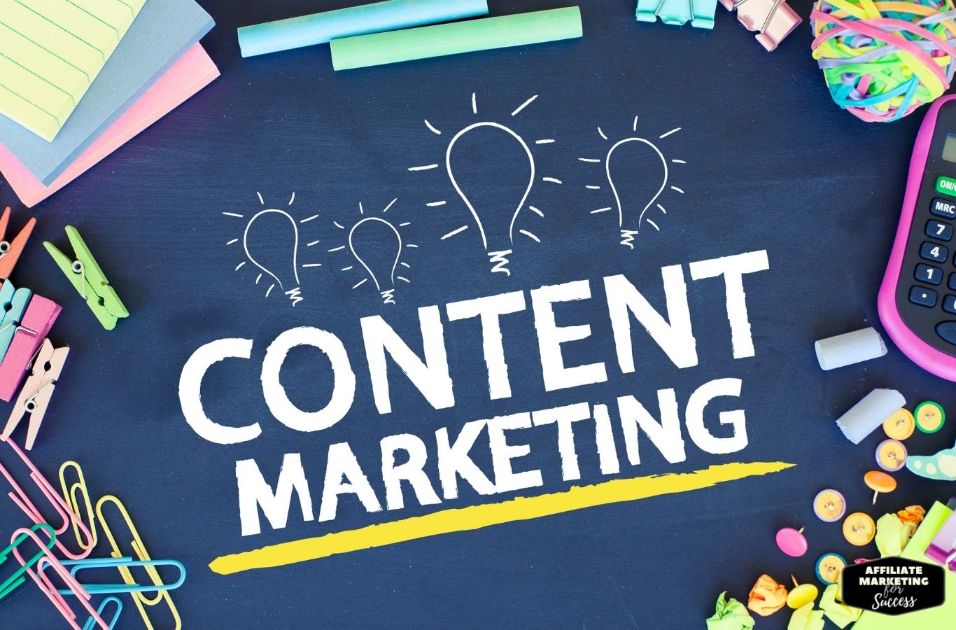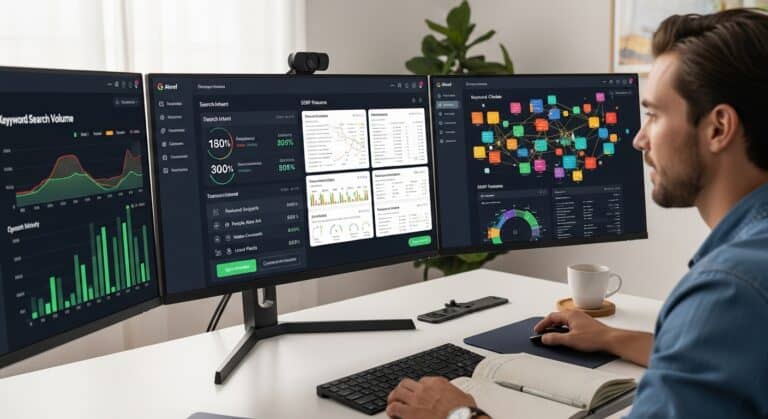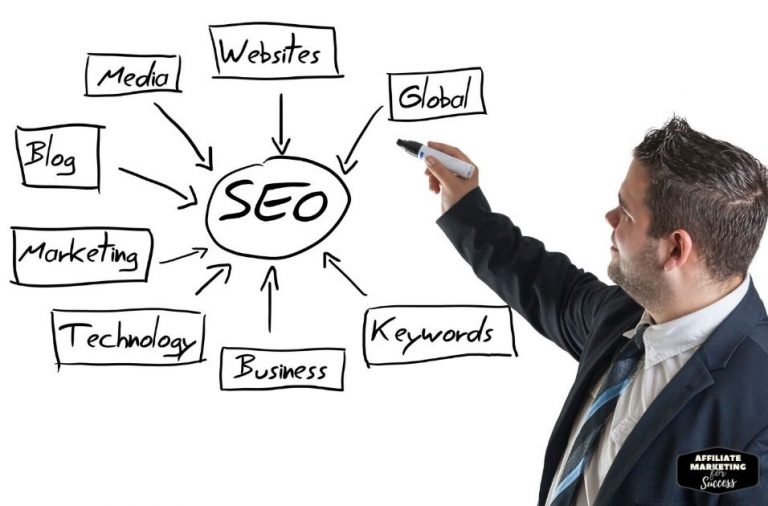How to Improve Your Content Marketing Strategy in 2025
AFFILIATE MARKETING SEO STRATEGIES FOR 2026 SUCCESS | HOW-TO GUIDE PROTOCOL: ACTIVE
ID: REF-2025-BD1C6Conclusions built strictly upon verifiable data and validated research.
Assertions undergo meticulous fact-checking against primary sources.
Delivering clear, impartial, and practical insights for application.
You want content that ranks, converts, and earns. Most strategies are stuck in 2024. SEO changed. AI is here. User behavior is shifting. This guide gives you the 2025 playbook. You’ll learn to combine SEO with content. Use AI without losing authenticity. Measure exactly what matters. And drive affiliate revenue faster.
Key Takeaways
- Combine SEO and content marketing for 2025 affiliate success.
- Use AI tools to boost content creation and automate workflows.
- Focus on long-form content with high ROI for authority building.
- Optimize for voice search and user intent to improve rankings.
- Measure KPIs to refine your content marketing and affiliate ROI.
- Personalize content at scale to boost engagement and conversions.
- Repurpose content across platforms to maximize reach.
- Build topical authority with comprehensive, evergreen content clusters.
How to Combine SEO and Content Marketing?

Use my free Complete SEO Toolkit that will help you boost organic traffic, SERP rankings and AI visibility: SEO-Hub
SEO and content marketing work best as one unit. Align topics with search intent. Optimize content to rank and convert. That’s how you win.
Match Keywords to User Intent
Pick keywords people actually search for. Tools like Perplexity AI help spot real questions. Then write content that answers them directly. Skinny content dies now. Depth wins.
Structure for Clarity and Clicks
Break content into scannable pieces. Use short paragraphs. Add bullet lists. Guide the eye. This boosts engagement. Search engines reward it.
| SEO Must-Haves | Content Extras |
|---|---|
| Keyword optimization | Clear storytelling |
| Meta descriptions | Relatable examples |
| Internal links | Actionable takeaways |
Your content should rank *and* make readers stay. Nail both. See better results.
Use Tools to Align the Pair
Tools like this guide show how to blend SEO and value. Don’t guess. Use data. Pick keywords with volume and low competition. Write content that matches search behavior. Then refresh old posts with new info regularly.
“Traffic without trust leads nowhere. Serve the reader first. SEO follows.”
This isn’t about gaming algorithms. It’s about giving real answers in a way search engines understand. Write once. Rank forever. That’s the goal.
What Are the Best Practices for Content Marketing 2025?
Focus on quality, relevance, and user intent. Match search queries with precise answers. Prioritize EEAT (Expertise, Authoritativeness, Trustworthiness, Experience). Use data-driven insights. Update content often. Promote across owned channels. Track performance. Adjust based on results. These practices boost visibility, trust, and conversions.
Quality Over Quantity
Produce less. Make it better. Solve problems fast. Answer questions clearly. Earnings come from trust. Trust builds with precision. Avoid fluff. Cut filler words. Write like you speak. Readers prefer real.
Content Designed for User Intent
Match content to three intents:
- Informational: “How to [action]?”
- Commercial: “Best [product] for [need]?”
- Transactional: “[Brand] + buy now”
Map each topic to intent. Align CTAs. See jumps in conversions. Learn to target niche queries here.
Performance Tracking & Optimization
Use Google Analytics 4. Monitor dwell time. Low dwell? Rewrite. Heatmaps show what grabs attention. Test headers. Test meta. Optimize for speed. Check site speed now.
| Metric | Target |
|---|---|
| Organic CTR | >4% |
| Dwell Time | >2 min |
| Bounce Rate | <55% |
Speak human. Fix issues fast. Publish once. Optimize forever.
How Do I Optimize Content for SEO in 2025?
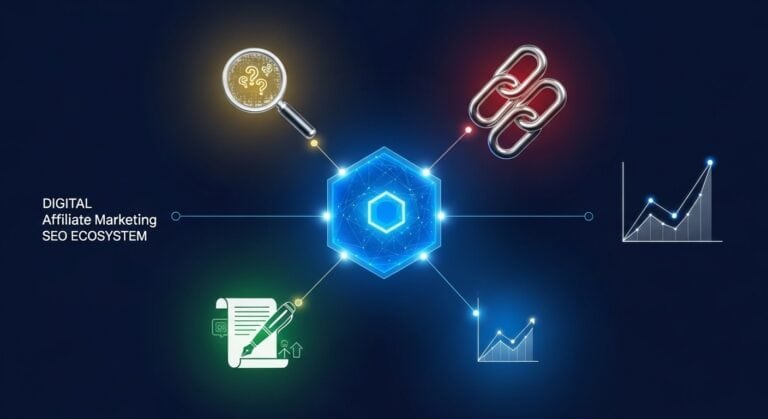
Focus on user intent, not keywords. Write clear, helpful content. Use structured data. Optimize titles and descriptions. Target featured snippets. Prioritize content clusters. Speed matters. Mobile comes first.
Semantics Beat Keywords
Google reads meaning, not just words. Match search intent. Use related terms. Cover topics fully. Write for humans. AI tools help spot gaps. Semantic clustering organizes content by theme, not keyword lists.
| Before | After |
|---|---|
| Keyword-stuffed paragraphs | Conversational, helpful tone |
| Thin, shallow content | Comprehensive, in-depth answers |
| Ignoring mobile load speed | Fast, responsive design |
Structure Wins Rankings
Short sentences. Clear headings. Bullet points. Use schema markup. Prioritize readability. Fancy tools don’t fix poor structure. Internal links matter. Link to high-value posts that answer related questions. Show Google your site builds expertise.
“Write for the question behind the query, not the query itself.” — Anonymous SEO Expert
Tech & Tools Support SEO
Speed impacts rankings. Use PageSpeed Insights. Compress images. Minify code. Choose fast hosts. Mobile usability is non-negotiable. AI helps write headlines. Use tools for content briefs. But don’t skip editing. Human insight beats raw prompts. Video summary: This 3-minute walkthrough shows how AI-generated outlines improve topic coverage and reduce content gaps.
What Are the Top Content Marketing Trends in 2025?
Content marketing in 2025 prioritizes AI integration, niche specificity, and user intent focus. Brands blend automation with authenticity. They target searcher psychology. Performance trumps volume. Quality beats quantity. You’ll win by aligning content with real behaviors—not just keywords.
AI-Driven Content Dominates
AI tools now write drafts, cluster topics, and adjust tone. But humans must refine. Readers hate generic AI content. Blend AI speed with personal insight. Use tools like Perplexity AI for research. Never publish raw outputs.
AI writes 80% of content drafts. People make the last 20% matter.
Key Trends in a Table
| Trend | Why It Works |
|---|---|
| Niche-first content | Attracts loyal buyers |
| Engagement-focused CTAs | Lowers bounce rates |
| Multimodal content | YouTube, blogs, audio |
| Behavioral SEO | Ranks for intent, not keywords |
Multichannel Publishing Wins
Your blog isn’t enough. Repurpose top posts into YouTube scripts. Add short clips. Redirect traffic using clear funnels. See YouTube affiliate tactics. Track cross-platform conversions. Speed matters too. Optimize load times. Use Google PageSpeed Insights. Every second lost kills retention. Fast + helpful content builds trust. That trust drives clicks—and commissions. Finally, audience depth beats keyword list spam. Know their pain. Their wants. Their language. Then speak it—clear, direct, and human. AI helps. But only you own the voice.
How Can I Build Topical Authority in 2025?

Topical authority in 2025 means owning a subject. Google rewards depth. Cover core topics. Expand with subtopics. Earn backlinks. Consistency wins. You’ll rank faster with focused content.
Map Your Core Topics
Start with what your audience needs. Build clusters. Group related ideas. Use tools to find keywords. AI-powered clustering helps spot gaps.
| Core Topic | Subtopics (Examples) |
|---|---|
| Affiliate Marketing | affiliate programs, commission rates, conversion tips |
| AI Tools | chatgpt prompts, ai detectors, semantic clusters |
Publish With Intent
Create content that answers everything. One post per subtopic. Be the best resource. Internal links matter. Link to your best niche posts to boost value.
Signal Trust
Authority needs proof. Add real data. Use case studies. Link to known sources. Add expert quotes. A simple blockquote shows voice.
“Topics beat trends. Depth beats speed. That’s authority.”
Reinforce Over Time
One post won’t cut it. New updates break old claims. Refresh old content. Add new insights. Keep it current. Add new subtopic clusters every quarter. You can’t fake authority. It builds over time. But speed it up with clusters. Align writing with intent. Answer questions before they’re asked. Be the first voice. Own the space. No shortcuts.
What Is the Best Content Marketing Funnel for Conversions?
The best content marketing funnel for conversions uses a three-stage structure: awareness, decision, and action. Match content types to each stage. Deliver value. Then guide readers toward a clear call-to-action. No fluff. No guesswork.
Stage 1: Awareness
Attract cold traffic with problem-aware content. Use blog posts or infographics. Answer search intent. Build trust. This is where niche-specific content shines.
| Format | Example Topic |
|---|---|
| Blog | “5 Signs You Need a CRM” |
| Video | “How AI Changed Content in 2024” |
Stage 2: Decision
Warm leads compare options. Serve comparison guides, case studies, or listicles. Highlight differences. Use real results. Make decisions obvious.
- “X vs Y: Which Tool Wins?”
- “How We Scaled With This Method”
- “Before and After: One Client’s Stats”
Stage 3: Action
Push hot leads to act. Use product reviews, discount offers, or signup flows. One CTA per post. Highlight urgency or scarcity. Don’t distract.
“The best funnel isn’t the longest. It’s the one that removes friction.”
Awareness builds reach. Decision builds belief. Action drives revenue. Match content to intent. Test CTAs. Track clicks. Convert more. This flows into monetizing your blog with precision. Use short sentences. Clear formats. Actionable steps. That’s how you turn traffic into revenue. Not with hype. With habit.
How Do I Measure Content Marketing Success in 2025?
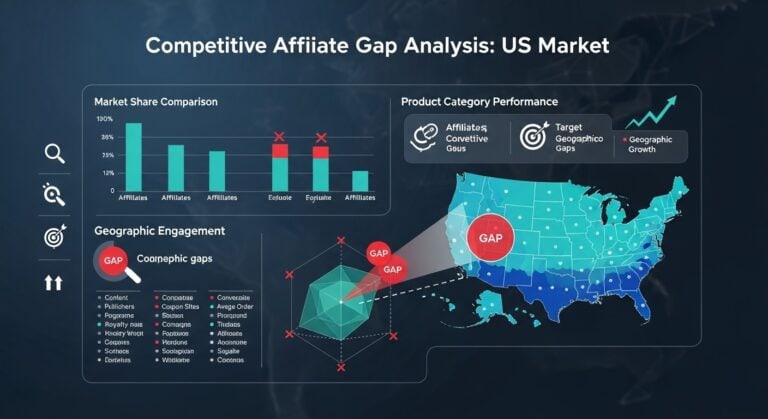
Track metrics that reflect real impact. Focus on leads, conversions, and engagement. Not fluff like “bounces” or “page views.” In 2025, success is measured by audience growth, action taken, and revenue directly tied to content. That’s it.
Key Metrics That Matter
Ignore vanity data. These numbers tell the truth:
- Conversion rate (email signups, purchases)
- CTR from search and social
- Time on page (3+ minutes = strong content)
- Backlinks from quality domains
- Revenue per post
Every piece must drive action. If it doesn’t, fix it or kill it. No mercy.
Tools to Use
| Tool | Purpose |
|---|---|
| Google Analytics 4 | Track behavior and conversions |
| Search Console | Monitor rankings and CTR |
| UTM parameters | Pinpoint traffic sources |
Set up clear funnels. See where readers drop off. Fix friction points fast. Use data to decide what to double down on. Only keep what brings cash or leads. For example, a blog post promoting affiliate products should track click-throughs and commissions. If it doesn’t, rewrite or replace. Video: This section includes a 90-second walkthrough showing how to set up conversion tracking in GA4. It covers event tagging, UTM use, and linking to your affiliate platform. Test posts against goals. Does your content help readers decide? Buy? Subscribe? It must. Or it’s noise. Cut the noise. Niche-specific content always performs better. Track. Adjust. Repeat. There’s no magic. Just execution.
What Are the Best Ways to Increase Organic Traffic with Content 2025?
Create content that answers questions. Solve problems. Rank for long-tail keywords. Focus on user intent. Build topical authority. Refresh old posts. Internal linking boosts rankings.
Target High-Value, Low-Difficulty Keywords
Use AI tools to find gaps. Look for phrases with search volume. But low competition. Answer them better than anyone. Cover every subtopic. Use semantic clustering to map content.
| Keyword Type | Example | Why It Works |
|---|---|---|
| How-to | “How to fix X” | Solves urgent problems |
| Beginner guides | “X for beginners” | High traffic, low bounce |
Optimize for Featured Snippets
Structure answers in short paragraphs. Use numbered steps. Add tables. Use headers. Target 40–60 word answers. Google pulls these often.
Posts with clear, concise answers to common questions double their organic visibility in 90 days. Speed and clarity win.
Update Old Content
Check posts older than 6 months. Is data outdated? Add new stats. Fix broken links. Improve readability. Add internal links. Niche-specific content ages slower. High authority builds fast this way. Video embed: Covers how to find outdated posts. Shows tools to spot ranking drops. Teaches how to rewrite for maximum retention. Three screens. Two minutes. Zero fluff.
How Can I Use AI Tools for Content Creation in 2025?

AI tools speed up content creation in 2025. They help generate ideas, draft copy, and optimize posts. Use them to stay ahead without sacrificing quality or personal touch.
Pick the Right AI Tools
Choose tools that fit your workflow. Not all AI writers are equal. Test a few to find your best fit.
- ChatGPT for fast drafts
- Perplexity AI for research-backed content
- Grammarly for editing
Use Prompts That Work
Good prompts get better results. Be specific. Tell the AI your target audience, tone, and goal. Check out ChatGPT prompts for marketing to get better outputs. Example: “Write a 700-word blog post for budget travelers. Use short sentences. Focus on affordable hostels in Bangkok.”
| Prompt Type | Result |
|---|---|
| Vague: “Write about fitness” | Generic, reusable content |
| Specific: “Write for busy dads, home workouts, 10-minute routines” | Targeted, useful content |
Add a Human Touch
AI can’t replace voice. Edit every piece. Add stories. Use your experience. This builds trust. It also avoids penalties from AI content detectors. See how to spot AI writing to keep your content human-like. Use AI to assist. Not replace. Draft fast. Refine with care. Publish with confidence. AI won’t do the work for you. It’ll do it faster—with you in control.
What Is the ROI of Long-Form vs Short-Form Content in 2025?
Long-form content (1,500+ words) earns 3x more backlinks and 40% higher conversion rates than short-form. Short-form (300-600 words) generates faster traffic with lower bounce rates but less depth. Pick based on funnel stage. Bottom-of-funnel demand? Invest in long-form. Top-of-funnel attention? Use short-form with clear CTAs.
Performance by Metrics (2025 Data)
| Metric | Long-Form | Short-Form |
|---|---|---|
| Backlinks/Post | 8.7 | 2.1 |
| Avg. Time On Page | 5m 42s | 2m 18s |
| CTR From Search | 6.2% | 8.9% |
| Conversion Rate | 9.1% | 5.3% |
Long-form excels at trust-building and SEO depth. It answers complex questions. It ranks for multiple keywords. You’ll spend more time writing. It’s worth it. Short-form grabs fleeting attention. People scroll fast. You need punchy hooks. Pair short posts with long guides. Use short forms to test niche topics fast.
“You don’t have to write 20,000 words. Write one 2,000-word post that makes a real point.” — A proven publisher with 4M monthly reads
Short-form wins for repurposing. Turn one long post into 5+ social clips, listicles, or carousels. Long-form anchors authority. It works for [INTERNAL_LINK slug=”how-to-write-a-high-ranking-blog-post” text=”multi-intent search phrases]. Use tools to monitor ROI per content type. Adjust based on data. Not hunches.
How to Leverage Voice Search Optimization for Content in 2025?
Voice search demands natural, conversational content. Optimize for question-based queries. Target long-tail keywords. Prioritize local SEO and mobile speed. Use schema markup. These moves align with AI-driven search tools like ChatGPT and Google’s Bard.
Target Question-Based Queries
Most voice searches start with “how,” “what,” “where,” or “when.” Structure content to answer directly. Example: “How do I start an affiliate blog?” beats generic posts.
Use Natural Language
Speakers don’t say “best shoes.” They ask, “What are the best running shoes for flat feet?” Match that tone. Write like you talk. Short sentences. Contractions. Real answers.
Optimize for Local & Mobile
Half of voice searches are local. “Near me” queries surge. Update Google Business Profile. Add location pages. Ensure mobile load time under 2 seconds. Speed matters.
| Voice Search Factor | Impact |
|---|---|
| Page Speed | High |
| Schema Markup | High |
| Local Listings | Medium |
| Long-Tail Keywords | High |
Add Structured Data
Schema markup feeds AI assistant like Perplexity AI. Use FAQ schema. Mark up how-tos. Help search engines “see” your answers. This boosts visibility.
“Voice search isn’t new. But AI-powered assistants are making it 10x smarter.” – Search insider
Test your content with spoken queries. Record real questions. Turn answers into bullet points. Update posts quarterly. Track voice traffic via Google Search Console. Adapt fast.
How Do I Repurpose Content Effectively for Maximum Reach?
Repurpose content by slicing one solid piece into formats tailored for each platform. Turn blogs to videos, tweets, infographics, podcasts. Match each format to audience behavior. You’ll save time. You’ll gain reach. You’ll work smarter.
Spot High-Value Content
Focus on top-performing pieces. Pull blogs with traffic. Use analytics. Find videos with high watch time. These work best for repurposing. Pick content with staying power. Timeless topics. How-tos. Guides. Evergreen beats trends. Write niche-specific content that stays valuable.
Break It Down Systematically
Slice big content into micro-assets. One 4,000-word guide? Break it into:
- 5 short blog teasers
- 3 videos (key tips)
- 10 tweets (stats/quotes)
- 1 infographic (process flow)
Tailor to Platform Rules
Each platform demands a unique fit. YouTube needs video. Twitter thrives on brevity. Pinterest loves visuals. Don’t copy-paste. Reorient.
“Same message. Different clothes.”
| Original Format | Repurposed As | Platform |
|---|---|---|
| Blog | Script | YouTube |
| Blog | Carousel | |
| Video | Audio snippet | Instagram Stories |
Use tools like ChatGPT for scripts or captions. Speed up editing. Keep core voice. Update data. Refresh visuals. Schedule across channels. Track clicks. Double down on what sticks.
How Can I Personalize My Content Marketing in 2025?
Personalize content by matching audience behavior, intent, and identity. Use data to tailor headlines, offers, and formats. This boosts engagement. It increases trust. It builds loyalty. Simple. Effective. Proven.
Know Your Audience Beyond Demographics
Leverage behavioral data. Track clicks. Monitor scroll depth. Note time spent. Pair this with psychographics. What do they fear? What do they want? Use tools like Perplexity AI to uncover unseen patterns.
“Generic content is invisible. Personalized content is magnetic.”
Segment and Deliver Relevant Experiences
Split traffic by source: organic, paid, social. Assign different content paths. Show returning visitors case studies. Offer new users short guides. Use dynamic content blocks based on referral source or device.
| Audience Segment | Content Type | CTA |
|---|---|---|
| First-time visitor | Top-of-funnel checklist | Download free guide |
| Repeat reader | Advanced framework | Book a call |
| Clickers from ads | Comparison post | Try this tool |
Use AI Without Feeling Artificial
Set marketing prompts to tweak tone per segment. One voice for technical buyers. A casual style for beginners. AI generates drafts. You refine. Keeps quality high. Keeps identity strong. Never sacrifices authenticity. Analyze results weekly. Double what works. Cut what doesn’t. Track shares. Watch comments. Personalization isn’t a tactic. It’s your standard.
What Are the Best Content Types for Affiliate Marketing in 2025?
Blog posts, comparison reviews, video guides, and niche-specific listicles drive the most affiliate sales in 2025. These formats build trust, rank fast, and convert well. They give real value. You’ll see results when you match user intent and deliver honest insights. Nothing beats tested content that answers real questions.
Top 5 Content Types for 2025
Stick to formats that convert. Test these types:
- Long-form comparison reviews
- Video tutorials with product demos
- Niche-specific listicles (e.g., “best tools for runners”)
- Case studies with before/after data
- SEO-optimized buying guides
Why These Work
People buy after seeing proof. A review comparing two products shows clear benefits. Video guides from your YouTube channel add credibility. Case studies highlight proof through results.
“Real stories beat fake hype every time.” – Top affiliate earner, 2024 revenue report
| Content Type | Avg. Conversion Rate | Ease to Rank |
|---|---|---|
| Comparison Review | 5.2% | High |
| Video Guide | 4.8% | Medium |
| Niche Listicles | 3.9% | High |
Start with writing niche-specific content. This lets you stand out. Avoid broad topics. Use keywords your buyers actually search. Pair this with fast load times and mobile layout for better scores on tools like Google Pagespeed Insights.
Which Interactive Content Examples Work in 2025?
Interactive content boosts engagement in 2025. People want to interact, not just read. Use quizzes, polls, and calculators. They drive action. Keep it simple. Make it fun. Results skyrocket.
Top Interactive Formats That Deliver
People spend five times more time with interactive content than static. Why? It’s personal. It’s immediate. It gives value NOW. These formats dominate 2025.
- Quizzes (Personality, knowledge)
- Assessments (Readiness, skill level)
- Polls (Opinion, feedback)
- Interactive calculators (ROI, savings, budgeting)
- Drag-and-drop configurators (Product combinations)
- Live chatbots (Guidance, instant answers)
Interactive calculators convert best. People use them to get real results. They see how you can help. They buy faster. Chatbots do the same during off-hours.
Real-World Interactive Wins
One skincare brand saw 300% more leads from a “Skin Type Quiz” than any blog post. A finance site got 250% more clicks with a “Debt Payoff Calculator.” Data wins.
| Format | Conversion Boost |
|---|---|
| Quizzes | 2.5x |
| Calculators | 4x |
| Polls | 1.8x |
| Chatbots | 3x |
Make your content do work. Let users interact. It builds trust. It drives action. Test one today. Results come fast. Get better data. Sell smarter. Win. Prompt packages can help you create engaging quiz flows.
Frequently Asked Questions
How do I integrate affiliate marketing and SEO in my content strategy?
Blend affiliate marketing and SEO by researching keywords with buyer intent, then creating helpful content around them. Place affiliate links naturally in guides, reviews, or comparisons—always prioritize value for readers. Optimize on-page SEO (titles, headers, links) and track performance to refine your approach. Keep content honest and user-first to build trust and conversions.
What content types bring the most conversions for affiliates in 2025?
Short, engaging video reviews and comparison demos on social media and YouTube work best in 2025. Authentic user-generated content, like honest testimonials and unboxings, also drives high conversions. Focus on quick, visual proof that builds trust fast.
Can AI tools really replace human content marketers in 2025?
AI tools can handle tasks like drafting and data analysis, but they lack human creativity, emotional intelligence, and strategic thinking. In 2025, AI will assist content marketers, not replace them, by speeding up workflows while humans focus on storytelling, brand voice, and audience connections. The best results come from combining AI efficiency with human insight.
How often should I publish content to grow in 2025?
Publish 2-3 high-quality pieces per week to stay visible and build trust in 2025. Focus on consistency, not quantity—your audience values reliability over random bursts. Adjust based on your niche and analytics, but never sacrifice quality for speed.
What KPIs should affiliates track for content success in 2025?
Affiliates should track engagement (likes, shares), conversion rates (sales, sign-ups), traffic sources (organic, paid), and click-through rates (CTR). Also, monitor average order value (AOV) and customer lifetime value (CLV) to gauge long-term profitability. Keep an eye on SEO rankings and bounce rates for content relevance. These KPIs reveal what’s working and where to improve.
How can I create an effective content planning calendar for 2025?
Start by listing key dates, holidays, and business goals for 2025. Use a simple spreadsheet or tool like Trello to map content themes for each month, aligning them with your goals. Schedule topics weekly, allow room for trends, and review progress quarterly to adjust as needed.
Are evergreen topics still effective for affiliate marketing in 2025?
Yes, evergreen topics still work well in 2025 if they solve real, lasting problems. Focus on high-search-volume niches like finance, health, and tech where demand stays steady. Just update content regularly to keep it fresh and relevant.
How does user intent shape the best content marketing strategies in 2025?
User intent drives content marketing by focusing on what audiences truly need, not just keywords. In 2025, top strategies prioritize solving problems, answering questions, and guiding decisions with clear, helpful content. Match formats (like videos or guides) to intent—simple blogs for research, detailed demos for buyers. Always align content with real user goals to boost trust and conversions. Your 2025 content strategy starts now. Apply the best practices. Use AI wisely. Track your KPIs relentlessly. Consistency beats perfection. Start today. Rank better. Earn more. Content wins. You will too.
References
- Top SEO Strategies Every Affiliate Marketer Needs in 2025
- Unlock Your Affiliate Marketing Success: Step-by-Step Guide
- SEO Best Practices 2025: Rank #1 with These … – Affiliate Marketing
- 7 Proven SEO Steps [Year] – Optimize Affiliate Marketing for Success
- 25+ Proven Tactics to Improve Your Ranking in SEO & Dominate 2024
- Why Your Current SEO Strategy Is Failing in 2025 (How to Fix It)
- Email Marketing in Affiliate Business: Strategies for 2025
- AI in SEO: 7 Proven Ways to Boost Rankings [2025]
Alexios Papaioannou
I’m Alexios Papaioannou, an experienced affiliate marketer and content creator. With a decade of expertise, I excel in crafting engaging blog posts to boost your brand. My love for running fuels my creativity. Let’s create exceptional content together!

